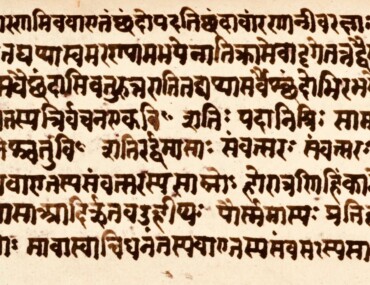Servant-Leadership

The practice of Ivalyou will enable each one of us to become a Servant-Leader, exemplified by Śrī Hanumāna, the Eternal Servant. Chanakya in the 4th century BCE echoed the idea of a servant-leader in his famous work, Artha-śāstra. Christians consider Jesus as the ultimate example of a servant-leader. Mehr Bābā, well known mystic-saint taught the principle of Mastery in Servitude.
Lao Tzu, writing in 5th century BCE said:
“The highest type of ruler is one of whose existence the people are barely aware. Next comes one whom they love and praise. Next comes one whom they fear. Next comes one whom they despise and defy. When you lack in faith, others will be unfaithful to you. The Sage is self-effacing and scanty of words. When his task is accomplished and things have been completed, all the people say, ‘We ourselves have achieved it!’”
In 1970, Robert K. Greenleaf used the word ‘Servant-Leader’ for the first time. He recognised that organisations as well as individuals could be servant-leaders. He had great faith that servant-leader organisations could change the world. In his second major essay, The Institution as Servant, Greenleaf articulated what is often called the ‘credo’.
He said:
“This is my thesis: caring for persons, the abler and the less able serving each other, is the rock upon which a good society is built. Whereas, until recently, caring was largely person to person, now most of it is mediated through institutions – often large, complex, powerful, impersonal; not always competent; sometimes corrupt. If a better society is to be built, one that is more just and more loving, one that provides a greater creative opportunity for its people, then the most open course is to raise both the capacity to serve and the very performance as servant of existing major institutions by new regenerative forces operating within them.”
Larry Spears, outlined ten characteristics of servant leaders by analyzing the writings of Greenleaf. These ten characteristics are: listening, empathy, healing, awareness, persuasion, conceptualization, foresight, stewardship, commitment to the growth of others, and building community. The keel of these qualities is active Compassion.
Patterson (2003), building on the foundation of transformational and previous servant leadership research, developed a model of servant leading based on the following: agapao love, humility, altruism, vision, trust, empowerment, and service. Matthew P. Earnhardt (2008) concluded in his study of the servant-leadership model in US Army saying, “To summarize the results of the study for the military context, the causal relationships proposed in Patterson’s servant leadership model (2003) were supported. Furthermore, gender and military affiliation was not found to determine differences in servant leadership characteristics.”
Sri Narendra Modi, the present Prime Minister of India, has set a fine example of servant leadership, by calling himself as Pradhāna-Sevaka or the Principal-Servant. He envisions a nation of servant-leaders, where each citizen takes upon himself/ herself, the onus of growth and welfare of the nation. He refers to such citizens as vikāsa-ke-sipāhī, or Crusaders of Growth. Even minor acts like stopping when the traffic light turns red or putting trash into the designated trash-bins situated in public places are included as responsibility of such crusaders of growth.
Servant Leadership flows into and draws from Transpersonal Leadership which was propounded by Stanislov Grof, building upon Abraham Maslow’s humanistic psychology that stated that all human kind is ultimately aimed at Self-actualization. Grof described leadership as a systematic development of ‘temperament’ and ‘a way of being’ that the person creates, enabling them to lead beyond one’s ego. The leader helps create a high-trust environment where people co-exist without suspicion and competitiveness. The central theme of such a team is, “None of us is smarter than all of us”. Śrī Hanumāna displayed a high example of such a form of leadership.
Ivalyou, with its axis firmly positioned in active compassion, provides the inner propulsion that leads to the development of the attitude of a servant-leader. This attitude is not only necessary in organisations, but is equally needed and relevant for a healthy and stable family or couple or other human relationships. Sadly, this kind of an attitude that puts the other first, before oneself is getting eroded very fast and may soon become an extinct emotion, unless we wake up to it as a generation.
Swami Veda Bharati succinctly pointed out the four key thought streams of the last century that have flooded the collective mind-field of this new millennium leading it towards self-centered, consumption driven, pleasure-seeking living:
- a) Survival of the fittest as part of the process of evolution, giving rise to competition as the central attitude to work and success; taking away the focus from the ‘survivor’ and placing an over emphasis on ’survival’ (Charles Darwin).
- b) Sexuality as the primary guiding urge of human personality and behaviour, giving rise to pursuit of pleasure as the singular goal across all age bands and ethnicity (Sigmund Freud).
- c) Utilitarianism as the general outlook to justify capitalism and financial-imperialism, giving rise to result-oriented achievements, whatsoever be the means, including in personal relationships – human beings considered disposable resources limited by their utility value at the moment, both in an organisation or in relationships (Mill, Bentham, Adam Smith).
- d) Economics as the primary factor in the development of civilisation, eroding the socio-cultural-spiritual foundations which sustained human civilisation thus far (Karl Marx and other western philosophers).
It is time to begin anew, each one of us, individually, practising Ivalyou as one’s core ethic. Each of us can become an example for others to emulate, gradually leading to a change in the collective mindscape of the human kind, transforming the current race of competition to experiencing the grace of compassion. It is a grace that one pours upon oneself, and also allows the same to flow from one’s heart towards the world, both.
Dr. Pawan Kumar Mishra


